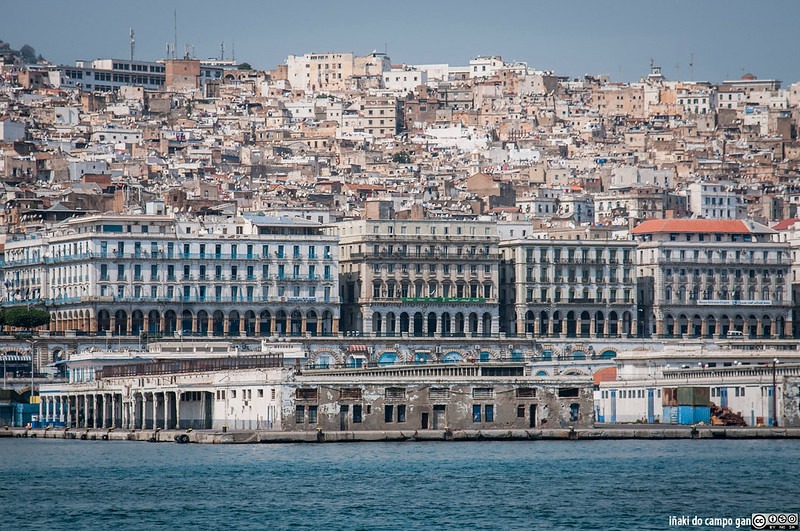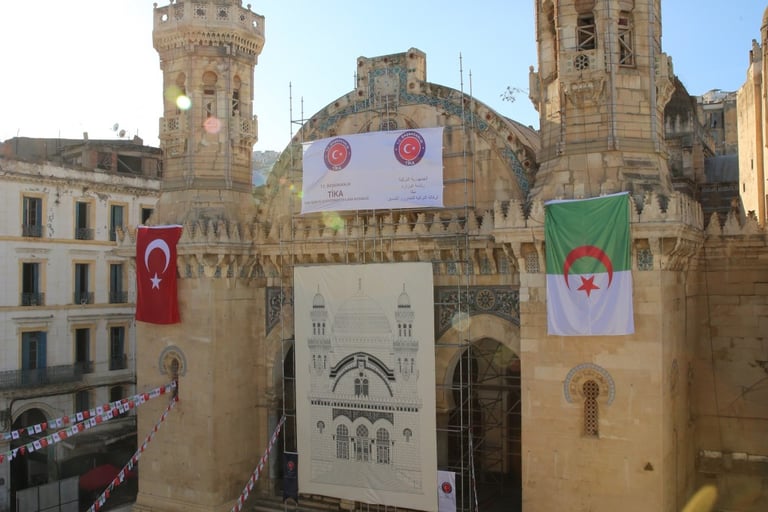Algiers – White on the Sea
Discover Algiers, the radiant white city by the Mediterranean, where history, architecture, and coastal beauty converge.
DESTINATIONS
Jetsclusive
6/24/20255 min read


Algiers – White on the Sea
There’s a reason Algiers is known as “Alger la Blanche.” The name evokes the picture of white buildings glowing above the Mediterranean, a city where sunlight glints off lime-plastered walls and spills into steep, winding streets. Algiers’ striking skyline, often viewed from the ferry decks or the Corniche, captures a blend of European colonnades, Ottoman towers, French boulevards, and modern architecture. Each glimmering facade tells a story of resistance, exchange, and reinvention. Algiers stands as a living mosaic on North Africa’s coast—layered with history, vibrantly alive today, and facing the sea with the promise of tomorrow.
Algiers’ Architectural Brilliance and Whitewashed Beauty
The nickname “the White City” fits Algiers perfectly. Its iconic look comes from the city’s crisp white walls, built with lime and local stone, then slaked with layers of plaster to chase off the fierce Mediterranean sun. From ship decks or hillside viewpoints, Algiers bursts into view—a fan of whitewashed homes and bold landmarks standing against a sky-blue backdrop.
French colonial planners added wide boulevards and rows of arcaded buildings. But the city’s soul lies in its older layers. Ottoman influence fills the Kasbah, the city’s historic core, with narrow streets and bold palaces. Moorish arches stretch above stone-paved squares. The Ketchaoua Mosque mixes Ottoman domes with a touch of Byzantine grandness. On a distant headland, the Basilica of Notre Dame d’Afrique—a masterpiece of neo-Byzantine design—overlooks the harbor, its light walls glowing as dusk falls. Algiers’ architecture never stands still; it borrows and blends across centuries and continents.
A Skyline of White: Urban Aesthetics and Heritage
Algiers’ white skyline is more than a postcard image—it’s the city’s signature. From the slopes of the Casbah to the grand government squares, the sea of white brings a sense of brightness and unity. French colonial rule added symmetry and grandeur, but the white facades are what tie everything together.
Renovation and preservation are ongoing struggles. Plenty of buildings have decayed, especially in the oldest districts. Preservation projects and international partnerships are trying to save historic homes, revitalize battered streets, and keep Algiers’ story shining bright. Every layer of paint and rebuilt arch is a testament to both the city’s struggles and its strength.
Compare Private Jet Pricing to Algiers Here Powered by Villiers Jets — Trusted by 1,000+ flyers worldwide
The Kasbah of Algiers: UNESCO World Heritage
The Kasbah is the heart of Algiers and a treasure of world heritage. This thick knot of narrow streets, climbing staircases, and tightly packed houses creates a maze that has confounded invaders and enchanted visitors for centuries. The Kasbah is a living example of urban design from the Ottoman era, with influences from ancient Phoenician and Berber settlements.
Ottoman palaces peek behind battered gates. The Palace of the Dey still shows off its grand halls and intricate tilework. The Kasbah’s mosques, minarets, and Sufi shrines make it a wellspring of Islamic and Mediterranean culture, where ancient crafts like wood carving and tilework still survive. Despite damage and neglect, the Kasbah endures as a symbol of Algerian pride and memory—a crowded, colorful celebration of daily life unfolding along its winding alleys.
Iconic Landmarks and Blending of Cultures
Algiers brims with cultural crossroads. The Ketchaoua Mosque blends Ottoman, Moorish, and French colonial influences. French engineers may have altered its face, but it remains a jewel of Islamic art with its arched porticoes and decorative tiles.
The Palace of the Dey encapsulates the opulence of Ottoman rule. Inside, vaulted ceilings and hand-painted doors reveal a world of old-world luxury. Travel west, and the Basilica of Notre Dame d’Afrique rises on a bluff above the city. Its Roman-Byzantine curves and domes evoke both Parisian cathedrals and Roman temples, but with a distinctly North African spirit.
These landmarks mirror Algiers’ history—a city always blending, never static, absorbing influences from every visitor and ruler. They speak not only of faith and power, but of a mingling of ideas and artistry that still shape Algiers’ identity.
Compare Private Jet Pricing to Algiers Here Powered by Villiers Jets — Trusted by 1,000+ flyers worldwide
Modern Algiers: Culture, Growth, and Environmental Challenges
Much more than just a city of the past, Algiers is a bustling Mediterranean capital. With its vibrant markets, crowded trams, and new high-rises, Algiers pulses with life. Big changes are reshaping city life—new transport lines, bustling business centers, and regeneration projects along the waterfront. But every step forward brings new pressures, especially from climate change.
People and Economy: The Pulse of the City
Algiers is home to over 4 million people—a dynamic mix of Arab, Berber, and Mediterranean backgrounds. The city is a polyglot place, where Arabic and Berber meet French and, increasingly, English. Its economy is the beating heart of Algeria, powered mainly by oil and natural gas exports, which shape almost every aspect of urban growth.
Major companies and state entities shape the industrial landscape. Strong sectors include energy, shipping, banking, and a rising tech scene. But unemployment, especially among youth and women, is a stubborn challenge. Many residents work in the informal economy, running shops or driving taxis just to get by.
Urban Development and Infrastructure
Growth in Algiers is swift. New neighborhoods stretch out from old city walls, while restoration projects try to breathe life into battered streets. Along the bay, old port areas are being reimagined as leisure districts with cafes, parks, and wellness centers.
Public transport is expanding—metros, new tramways, shuttle buses—intended to ease gridlock, cut air pollution, and shrink the city’s carbon footprint. But balancing progress with preservation is tough. Modern glass towers jostle for space with Ottoman mansions and colonial theaters, pinching space yet adding energy.
Ongoing investment aims to upgrade water, waste, and energy infrastructure while protecting what makes Algiers unique: its walkable streets, human scale, and sense of neighborhood history.
Facing the Future: Environmental Pressures
Rising seas, extreme heat, and water shortages put Algiers’ future at risk. Much of the city clings to hillsides that are prone to landslides, while low-lying areas face flood risks as sea levels climb.
Climate adaptation is moving slowly. Solutions include planting trees to shade homes, building seawalls to hold back the waves, and restoring green spaces. Renewable energy is still a tiny slice of the city’s power mix, far overshadowed by fossil fuels.
Efforts to save the Kasbah and historic districts fight against tides of decay, overpopulation, and environmental threats. Saving Algiers’ unique skyline means not just preserving its buildings, but making the city safer and more resilient for the next century.
Conclusion
Algiers sparkles as a city of striking contrasts—between old and new, east and west, beauty and challenge. Its white skyline on the Mediterranean tells stories of occupation and independence, of cultural fusion and fierce pride. Today, Algiers is both a window into Algeria’s rich past and a laboratory for its future, working to reconnect with the sea, grow sustainably, and shield its treasures from rising tides. The White City remains a beacon, where history meets hope and every street points toward the sunlit sea.


Luxury
Explore the world of private aviation and travel.
support@jetsclusive.net
© 2025. All rights reserved.
